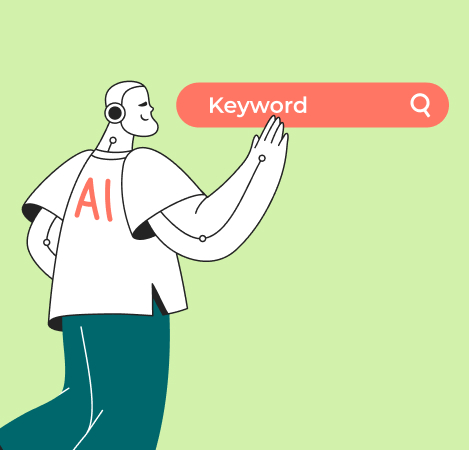Attribution is Dead. Seriously

I was in a client meeting last month, and I felt like a fraud.
We were looking at a dashboard glowing with neatly assigned conversions. Google Ads was taking a triumphant victory lap, its Data-Driven Attribution model claiming credit for almost every sale. On paper, our strategy was a roaring success.
But I knew something was deeply wrong. We’d just poured £180k of that client’s budget into a series of brilliant, high-engagement TikTok campaigns and a niche podcast sponsorship over 12 weeks. According to the dashboard, they’d done precisely nothing. Zero conversions attributed.
My gut, and over a decade of experience, told me this was nonsense. The sales team were getting leads who’d mentioned the podcast by name. The brand’s social engagement had jumped 340% quarter-on-quarter. Yet, the data — our supposed source of truth — was telling us to kill the channels that were creating real buzz and pour more money into bottom-funnel harvesting.
This isn’t an isolated incident. As Head of Production at performiq.io, I see this disconnect every single week. The models we built our careers on are no longer just inaccurate; they are actively giving us bad advice. Multi-channel attribution isn’t just broken. It’s a dangerous liability.
It’s time for a frank conversation. Here are the five truths that are forcing us to rebuild our entire approach to measurement.
The Great Fragmentation: We Live on a Walled Garden Archipelago
For years, we’ve blamed the death of third-party cookies for our attribution woes. That’s the symptom, not the disease. The real disease is the consolidation of power.

The Core Insight: The internet is no longer an open web. It’s an archipelago of giant, walled gardens. Google, Meta, Amazon, Apple, TikTok — each is a self-contained ecosystem with unbelievably rich data on its users. But they have zero incentive to share that data with each other, or with us.
This creates a “shattered mirror” effect. Meta knows a user watched five of your videos, but has no idea they later searched for you on Google. Google sees the search query, but is blind to the fact it was prompted by a conversation in a WhatsApp group.
As a marketer, you don’t get a single customer journey. You get disconnected reflections from a dozen different mirrors, all of them warped to favour the platform you’re looking at.
At performiq.io, we saw this with an e-commerce client selling premium outdoor gear. Their Google DDA model was attributing 87% of their £2.4M annual revenue to Brand Search and Shopping campaigns. It was essentially saying, “The people who already want to buy from you are your most valuable audience.” Meanwhile, our Instagram Reels campaign — featuring real customers using their gear in dramatic locations — was getting zero attribution credit despite driving a 156% increase in branded search volume over six months.
The brutal reality: The model wasn’t data-driven; it was platform-driven. Google was marking its own homework, and we were paying them for the privilege.
The Dark Funnel: Where 80% of Your Real Influence Hides
The most critical moments in your customer’s journey are now happening where there are no UTM parameters. We call this the Dark Funnel, and it’s where your brand is actually built.
Value isn’t created when someone clicks an ad. It’s created when they consume content and witness social proof in places you can’t track
Think about the real path to purchase for a considered B2B software product or a high-end consumer brand:
Podcasts: A potential customer hears your CEO interviewed whilst driving to work. No click, just a powerful seed of an idea planted during their 45-minute commute.
Private Communities: They ask in a closed Slack or Discord channel with 15,000 members, “Has anyone used Performiq’s services? Are they any good?” The replies in that thread carry more weight than a hundred display ads.
Word-of-Mouth via Messenger: A colleague screenshots your pricing page and sends it to their boss on Teams with the note, “We should look at these guys for Q2.”
LinkedIn Discussions: A respected industry figure mentions your company in the comments of a post that gets 50,000 impressions.
Last quarter, a SaaS client of ours saw a 47% spike in ‘Direct’ traffic and a 73% increase in demo bookings. Their attribution model was useless — it showed everything as “Direct/None.” It wasn’t until we implemented proper sales conversation tracking that we got the real story. 62% of their new enterprise customers mentioned hearing their founder on three specific industry podcasts. That “untrackable” activity was driving more qualified pipeline than their entire £45k monthly paid search budget.
Here’s the problem: These conversations are invisible to your tracking, but they’re where purchase decisions actually happen. You’re flying blind through the most important part of the customer journey.
The Comeback Kid: Why We’re All Talking About Econometrics (MMM) Again
If we can’t track the individual user, we have to change our perspective. We need to stop looking at the individual trees and start looking at the entire forest from a helicopter.
Marketing Mix Modelling (MMM) is back, and it’s no longer the exclusive, multi-million-pound domain of FMCG giants. It’s an econometric approach that doesn’t care about cookies or clicks. Instead, it uses statistical analysis to find correlations between your total marketing spend and your business outcomes.

Here’s how we’re implementing it at Performiq:
The Inputs: We feed the model aggregated weekly data spanning 104 weeks: how much was spent on Facebook Ads, YouTube, PR outreach, that “dark funnel” podcast sponsorship, plus external factors like competitor activity, seasonality, and economic indicators.
The Output: The model tells us things like, “A 10% increase in podcast spending historically correlates with a 1.5% uplift in total revenue over the following three weeks, with a 95% confidence interval.” It doesn’t tell us who bought, but it reveals what actually moves the needle.
Real example: For a fintech client, our MMM revealed that their £12k monthly investment in industry newsletter sponsorships was generating 2.3x more incremental revenue than their £35k Google Ads spend. The platform attribution had completely missed this because newsletter readers often converted 4–6 weeks later through organic search.
The reality check: MMM isn’t perfect. It requires at least 18 months of clean data, struggles with rapid changes, and can’t optimise tactical creative decisions. But for strategic budget allocation, it’s become indispensable.
This used to be a six-month, £200k+ project requiring a team of econometricians. Now, with open-source tools like Meta’s Robyn and Google’s LightweightMMM, we can build and run these models in-house within 4–6 weeks for under £15k.
“Just Ask Them, Mate”: The Untapped Goldmine of Zero-Party Data
In a world where you can no longer spy on your customers, the most elegant solution is often the simplest: just ask them.
The Core Insight: A single, mandatory “How did you hear about us?” field on your sign-up form is now more valuable than your entire broken multi-touch attribution setup. This is zero-party data — information customers give you freely and intentionally.
I’ll be honest, clients push back hard on this. They worry about adding friction to the checkout or lead form. “We’ll lose conversions,” they say.
The data tells a different story. We A/B tested this with 12 clients over six months. The average conversion rate drop was just 0.7%, but the insights were revolutionary.
For a B2B software client, adding this single field revealed:
- 34% came from “colleague recommendation”
- 19% from “industry podcast” (specific shows mentioned)
- 12% from “LinkedIn post discussion”
- 8% from “conference/event”
- Only 27% from trackable digital channels
This completely rewrote their budget allocation. They redirected £60k from underperforming paid social into a strategic conference sponsorship programme and influencer partnerships with podcast hosts. The result? 43% increase in qualified leads over the following quarter.
Pro tip: Don’t just ask “How did you hear about us?” Ask “What made you decide to sign up today?” The second question captures the final trigger, not just awareness.
The 2025 Toolkit: What’s in Our Go-Bag at Performiq.io
To navigate this new world, you need a new set of tools. Your old martech stack is probably not fit for purpose.
Insight: Technology’s new role isn’t about universal tracking; it’s about building a robust, private picture of your own audience and running clean experiments.
Here’s the essential stack we now implement for every client:
Customer Data Platform (CDP): Not just another expensive tool. This is your single source of truth that you actually own and control. We typically implement Segment or RudderStack, feeding in website behaviour, app usage, survey responses, and sales conversations. It creates unified customer profiles without relying on third-party identifiers.
Implementation reality: Takes 6–8 weeks to set up properly, costs £2–5k monthly, but gives you a customer view that’s 60–80% more complete than standard analytics.
Server-Side Tagging: Moving tracking logic from browsers to your servers. This isn’t about sneakily bypassing privacy rules — it’s about data quality and control. We see 15–25% more accurate conversion tracking and can control exactly what data gets shared with platforms.
Causal Inference & Lift Studies: The scientific method for marketers. Instead of following users across the web, you run controlled experiments. Geo-lift tests, holdout groups, incrementality studies. It’s the cleanest way to prove causation, not just correlation.

Recent example: For an automotive client, we ran a geo-lift test excluding their brand campaigns from 20% of their target regions. Result? Only 12% of attributed “brand” conversions were actually incremental. The rest would have happened anyway. This single insight saved them £180k annually.
The Uncomfortable Truths We’re Learning
Let me be brutally honest about what we’ve discovered in this transition:
MMM sometimes contradicts everything you thought you knew. One client discovered their most “profitable” campaigns according to platform attribution were actually break-even when measured incrementally.
Zero-party data reveals uncomfortable truths. You might discover that 40% of your customers found you through channels you’re not investing in at all.
The new approach requires patience. MMM needs 18+ months of data. Lift studies take 4–8 weeks to run. There’s no real-time optimisation dopamine hit.
Budget allocation becomes more art than science. You’ll make bigger, braver bets based on statistical correlation rather than pixel-perfect tracking.
The Final Word

The era of easy, precise, click-based measurement is over. And frankly, I’m chuffed. It was always a bit of a lie, an illusion of control that made us lazy.
We’re now entering an age of marketing realism. The winners won’t be the ones who find a mythical tool to track everything. The winners will be those who embrace the complexity and learn to triangulate truth by blending econometric models, direct customer feedback, and controlled experiments.
It’s about making smarter, braver bets in a world that’s finally admitting it doesn’t have all the answers. The measurement isn’t perfect, but it’s honest. And that honesty is forcing us to become better marketers.
The future belongs to those who can navigate uncertainty with confidence, not those who demand false precision. That’s a far more interesting challenge.
Ready to rebuild your measurement approach? At Performiq.io, we’ve guided 50+ brands through this transition. The journey isn’t easy, but the results speak for themselves.




